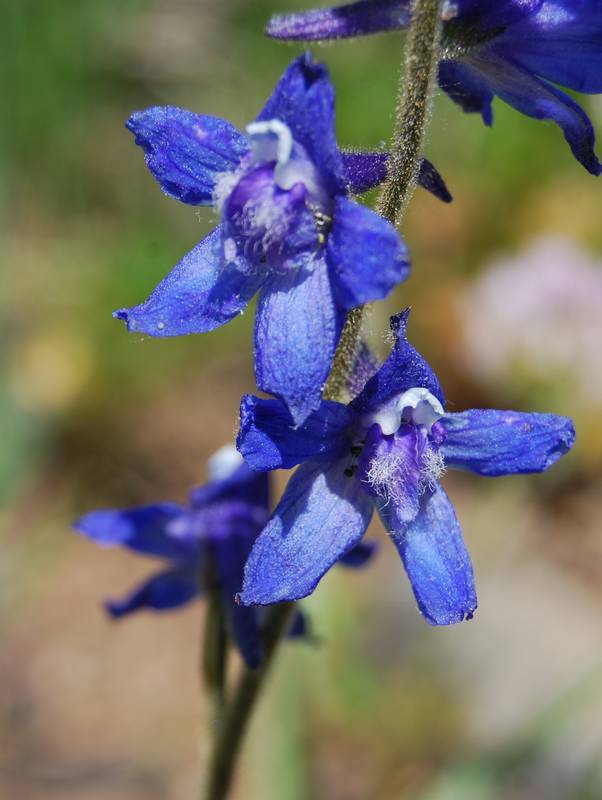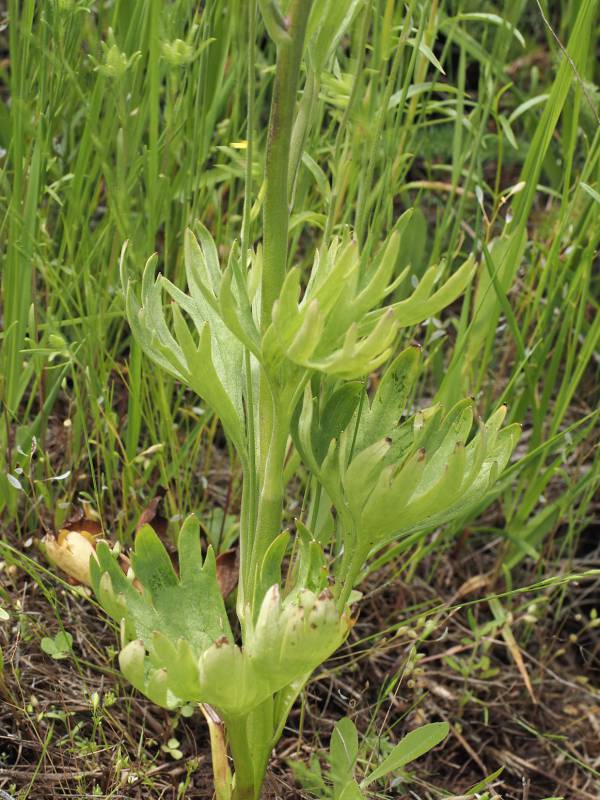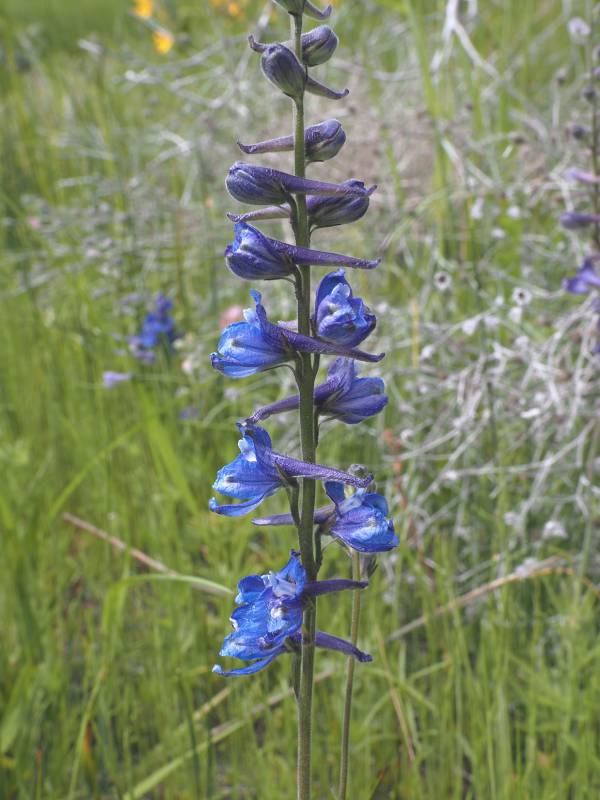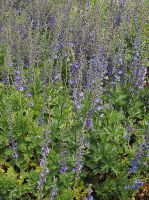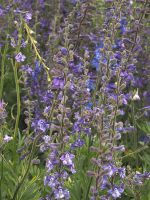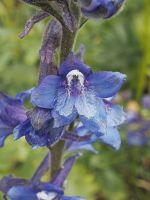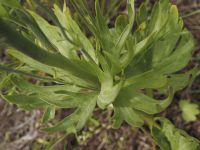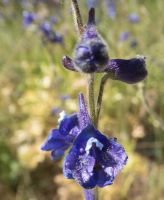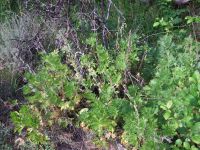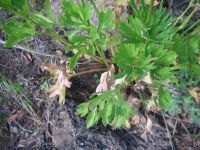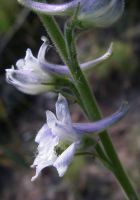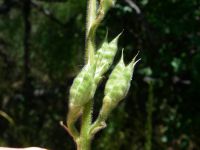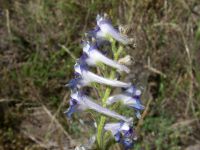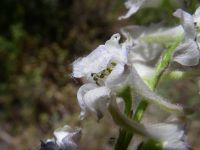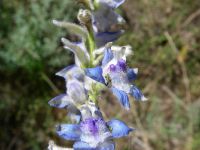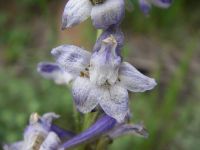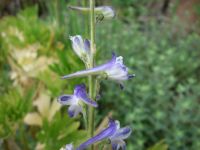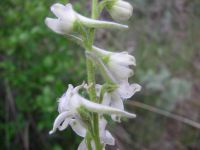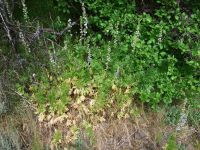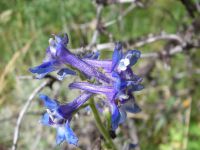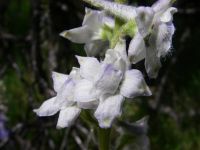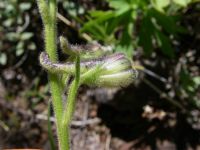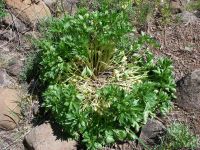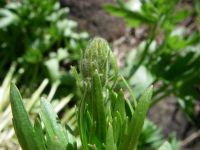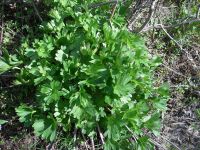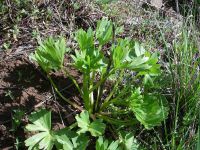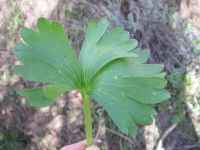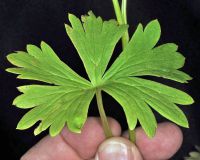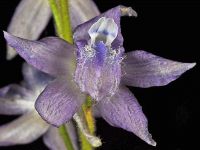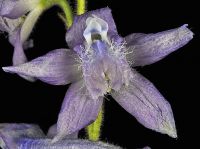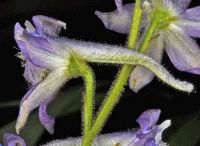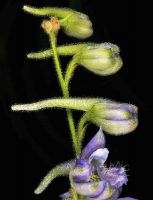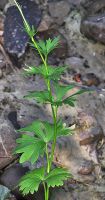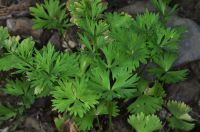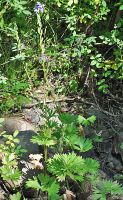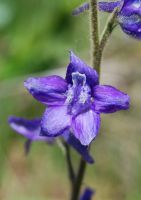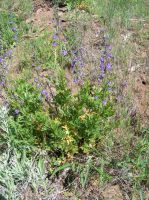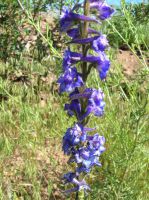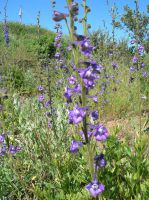Distribution: Occurring east of the Cascades crest in Washington, where endemic to Chelan, Kittitas, and Yakima counties in Washington.
Habitat: Along rocky, usually intermitant streams or springs in sagebrush hills to moderate elevations in the mountains.
Flowers: May-August
Origin: Native
Growth Duration: Perennial
Conservation Status: Not of concern
Pollination: Bumblebees, bees, flies, butterflies, hummingbirds
Rather stout perennial from thick, fibrous roots, the several stems simple, erect, hollow, 5-10 dm. tall, glandular-pubescent at least above.
Basal and lower cauline leaves thick and fleshy, long-petiolate, 5-12 cm. broad, 2-3 times lobed into oblong, rounded, entire segments; mid- and upper cauline leaves sub-sessile, crowded, more narrowly lobed and acutely segmented.
Inflorescence simple or compound, with yellowish, glandular hairs, the racemes elongate and spike-like; sepals 5, purplish-blue with a greenish-white mid-stripe, 9-11 mm. long, oblong-elliptic, spread with the tips cupped forward, the spur much longer than the blade of the upper sepal; petals 4, pale to dark blue; stamens numerous; pistils 3.
Follicles 8-13 mm. long, glandular-pubescent.
Publication: Vasc. Pl. Pacif. N.W. 2: 357. 1964.
PNW Herbaria: Specimen records of Delphinium multiplex in the Consortium of Pacific Northwest Herbaria database
WA Flora Checklist: Delphinium multiplex checklist entry
OregonFlora: Delphinium multiplex information
E-Flora BC: Delphinium multiplex atlas page
CalPhotos: Delphinium multiplex photos

